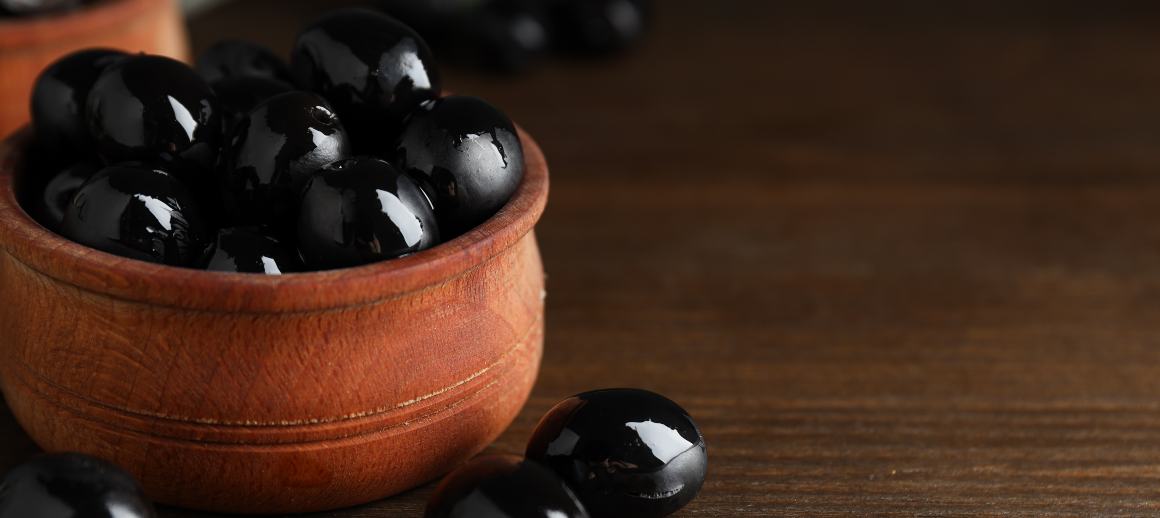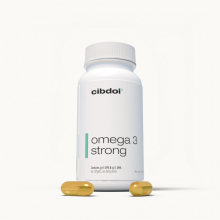Are Black Olives High in Omega-3?
Published:
Black olives are a popular ingredient used in many Mediterranean and Middle Eastern dishes. They provide a unique, bold flavor. Some sources claim that black olives are high in omega-3 fatty acids. But is this true?
Contents:
Black olives can certainly be part of a healthy diet. But when it comes to omega-3 content, not all black olives are created equal.
Below is a detailed look at the omega-3 levels in different types of black olives and whether they should be considered a significant source.

What are Omega-3 Fatty Acids?
Before examining the omega-3 content of black olives, let’s briefly overview what omega-3s are and why they matter for health.
Omega-3 fatty acids are a type of polyunsaturated fat found in certain foods. The main omega-3s of interest are:
- EPA (eicosapentaenoic acid)
- DHA (docosahexaenoic acid)
- ALA (alpha-linolenic acid)
EPA and DHA are primarily found in seafood. ALA is found in plant sources like nuts and seeds.
Research shows that omega-3s provide many health benefits, including:
- Heart health
- Brain function
- Eye health
- Infant development
- Mood support
- Reduced inflammation
Unfortunately, most people do not get enough omega-3s in their diet. For optimal health, it’s important to include omega-3 rich foods.
Now let’s see how black olives fit into the picture...
Omega-3 Content of Black Olives
Black olives come from the Olea europaea tree. There are many different types of black olives:
Kalamata Olives
Kalamata olives originate from Greece. They have an oval shape and a deep purple-black color.
Omega-3 content: Very low
Kalamata olives contain mostly monounsaturated fat, with almost no omega-3 ALA. A 3.5 oz (100 gram) serving provides just 4 mg of ALA.
So while kalamata olives are delicious, they are not a significant source of omega-3s.
Gaeta Olives
Gaeta olives are a small, black olive grown in Italy. They are dried, cured and packed in oil or brine.
Omega-3 content: Very low
Like kalamata olives, Gaeta olives provide almost no omega-3 ALA. A 100 gram serving contains 5 mg of ALA.
Sevillano Olives
Sevillano olives are a popular black olive grown in Spain. They have a mildly bitter, robust flavor.
Omega-3 content: Very low
Sevillano olives contain mostly monounsaturated oleic acid, with minimal omega-3 ALA. A 3.5 ounce serving provides just 13 mg of ALA.
Mission Olives
Mission olives originate from California. They are medium-sized with a purple-black color.
Omega-3 content: Very low
Mission black olives are low in polyunsaturated fats, including omega-3s. One 100 gram serving provides only 9 mg of ALA.
Sicilian Olives
Sicilian olives are a medium-sized black olive grown primarily in Sicily. They have a fruity, mildly bitter taste.
Omega-3 content: Very low
Like other common black olive varieties, Sicilian olives contain very little ALA omega-3 fat. A 100 gram serving has just 5 mg of ALA.
Olive Oil
While whole black olives contain minimal omega-3 ALA, olive oil pressed from olives provides a bit more.
A tablespoon (15ml) of olive oil contains around 10 mg of ALA. So olive oil has more omega-3s than whole olives - but it's still not a significant source.
Are There Any High Omega-3 Black Olives?
The common varieties above are all very low in omega-3s. But there are a few specialty black olive types that contain higher amounts:
Arbosana Olives
The Arbosana is a premium variety of black olive grown in Spain. It's considered a “boutique” olive.
Omega-3 content: Moderate
Arbosana olives contain more ALA than regular black olives. A 100 gram serving provides around 128 mg of ALA omega-3s.
That's still not very high compared to other omega-3 foods. But it's significantly more than regular black olive varieties.
Organic Black Olives
Organic black olives may provide slightly more omega-3s than conventionally grown options.
For example, one brand of USDA certified organic black olives contains 183 mg of ALA per 100 gram serving. That’s 4-6 times more than regular black olives.
However, omega-3 content can vary widely by brand. So it’s important to check labels for the ALA content of organic black olives.
High Phenolic Olives
Phenolic compounds are antioxidants in olives that offer health benefits.
Some research shows that olive varieties higher in phenolics tend to contain more ALA omega-3 fats.
So phenolic-rich “functional olives” may be a better source of omega-3s. But more research is needed.
Top Dietary Sources of Omega-3s
While certain black olive varieties contain more omega-3 ALA than others, they are still not a very concentrated source compared to other foods.
Here are some of the top dietary sources of omega-3 fatty acids:
EPA/DHA Oil Fish:
- Salmon: 1,500-2,000 mg per 3.5 ounces
- Sardines: 1,500 mg per 3.5 ounces
- Anchovies: 951 mg per 3.5 ounces
- Mackerel: 600-700 mg per 3.5 ounces
ALA Plant Sources:
- Chia seeds: 5,000 mg per ounce
- Flaxseeds: 2,300 mg per tablespoon
- Walnuts: 2,500 mg per 100 grams
- Soybeans: 1,000 mg per 100 grams
ALA Fortified Foods:
- Eggs: 250-500 mg per egg
- Milk: 100-200 mg per cup
- Yogurt: 100-300 mg per 6 ounces
As you can see, common black olives contain minimal amounts of ALA omega-3 compared to the top dietary sources. Even “high” omega-3 olive varieties provide at most around 128 mg per serving.
Should You Eat Black Olives for Omega-3s?
Black olives are low in calories and provide healthy monounsaturated fats, vitamin E, iron and antioxidants. They can be part of a balanced, Mediterranean-style eating pattern.
However, regular black olives and olive oil don't provide significant amounts of omega-3 fatty acids. Certain premium varieties like Arbosana olives or organic options contain more - but they're still not a very concentrated source.
If you want to optimize your omega-3 intake, it’s best to include oily fish, omega-3 eggs, walnuts, chia and flax seeds, soybeans and other foods naturally rich in EPA, DHA and ALA.
Black olives can add great flavor, variety and health benefits to your diet - but they should not be your primary omega-3 source. Focus on the top omega-3 foods to get the most benefits.
Key Takeaways: Are Black Olives High in Omega-3?
- Omega-3 fatty acids like EPA, DHA and ALA provide many health benefits. Most people need to increase omega-3 foods.
- Common black olive varieties like Kalamata, Gaeta and Mission are very low in ALA omega-3s.
- Premium olives like Arbosana have more omega-3s than regular varieties – but they're still not a concentrated source.
- Fish, seafood, chia seeds, walnuts and soybeans are among the top dietary omega-3 sources.
- Black olives can add flavor and nutrition, but should not be your primary omega-3 source. Eat them in moderation along with high omega-3 foods.
Conclusion
Black olives provide healthy fats, vitamin E, iron and antioxidants. However, common varieties contain minimal omega-3 ALA. Certain premium olives and organic options have more, but still pale in comparison to top sources like salmon, chia seeds and walnuts. While black olives can add great flavor to a meal, they should be enjoyed in moderation and not relied on as your main omega-3 source. To increase omega-3 intake, incorporate fatty fish, eggs, nuts, seeds and beans into a Mediterranean inspired diet with black olives used as a complementary ingredient. This balanced approach will help ensure you meet your omega-3 needs for optimal health.










